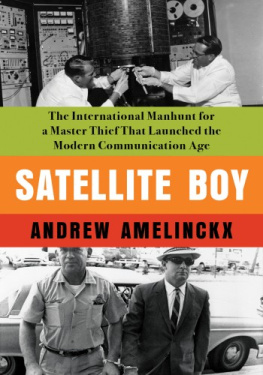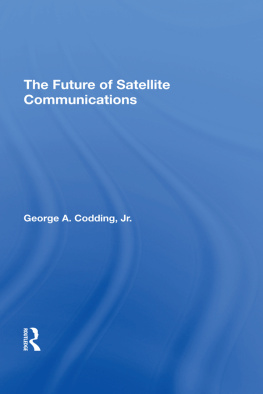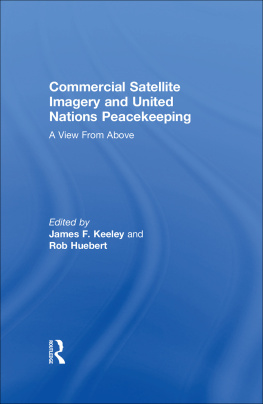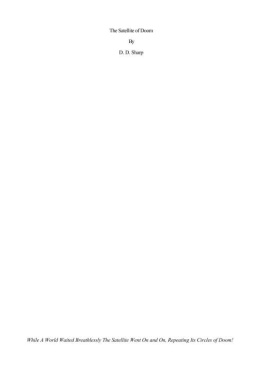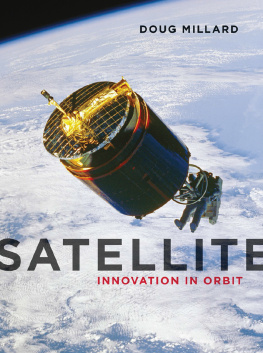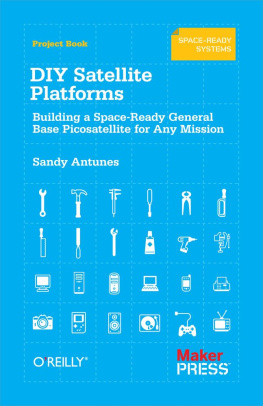SATELLiTE BOY
ALSO BY ANDREW AMELINCKX
Exquisite Wickedness: Two Murders and the Making of Poes The Tell-Tale Heart
Hudson Valley Murder & Mayhem
Gilded Age Murder & Mayhem in the Berkshires
This book is dedicated to my mother, who instilled in me a love for the beauty of language, and my father, whose deep knowledge of history inspired my passion for the past. They are both gone but continue to guide me as I make my way through life.
The only way of discovering the limits of the possible is to venture a little way past them into the impossible.
ARTHUR C. CLARKE , Profiles of the Future
Contents
SATELLiTE BOY
ARTHUR M. SCHLESINGER JR., THE HISTORIAN, FRIEND, AND advisor to President John F. Kennedy, predicted in January 1960 that the coming decade would be spirited, articulate, inventive, incoherent, turbulent, with energy shooting off wildly in all directions. He was right.
The 1960s saw the growth of the Civil Rights and Anti-War Movements, Womens Liberation, and environmentalism, among many other sea changes. Culturally, the perceived staidness of the previous decade was replaced by an explosion of counterculture art critical of the status quo. The Beatles, Motown, and Bob Dylan; To Kill a Mockingbird and Malcom X and Alex Haleys The Autobiography of Malcolm X ; James Bond films and Breakfast at Tiffanys ; Andy Warhols vision of pop art and its antithesis, minimalism, all burst onto the scene as both harbingers and catalysts for what was unfolding. The societal rifts that had been building for years finally ruptured into flames and bloodshed by decades end.
This turbulent time also set the stage for an ingenious bank heist that dovetailed with the development of the worlds first commercial communication satellite. At first glance, advancements in satellite technologya largely forgotten aspect of the Space Race, which tends to favor marquee achievements like the Apollo 11 moon landingmight seem unremarkable. Yet the fundamental shift in how we communicate that was facilitated by those satellites would come to alter the course of history and redefine the very notion of what it means to be human to a much greater degree than a boot print on the surface of the moon ever could. In many ways, the story of the jubilant and volatile mid-century period that Schlesinger described is the story of advancements in communications. The moon landing is a prime example, but many of the iconic events of the era are memorable precisely because so many people witnessed them from the comfort of their own homes. Two radically different yet equally visionary men best exemplify this new era: master thief Georges Lemay and electrical engineer Dr. Harold Rosen. Though they never met, their energies crossed paths, came together, and gave rise to the modern communication age, forever changing our world.
To understand how the vastly different lives of these two strangers created the now-familiar world of instantaneous connectivity, weather reports, and even live televised sports, its helpful to understand a little bit about how satellites work.
Communication satellites are launched into space via powerful rockets. When they reach their destination, they detach from the launch vehicle at a fast enough speed to stay in orbit and resist Earths gravity. Once in place, ground stations beam up information, such as television broadcasts and phone calls, that has been converted from the original format into electromagnetic waves. The satellite then relays that information to another ground station elsewhere on the globe, where its converted back into the original data format and then sent on to its final destination through transmission lines such as telephone wires or cables. Without communication satellites, it becomes extremely hard to get electronic information from point A to point B over long distances since radio waves and microwaves that are used to transmit electronic information can be blocked by objects like mountain ranges or tall buildings.
Beginning with the U.S. Army Signal Corpss Project SCORE, an experimental communication satellite launched in 1958, the push to develop practical systems accelerated. The issues SCORE suffered from included a miniscule life span measured in weeks, and limited real-world applications. Like several other satellites that came after it, SCORE operated in a low-Earth orbit. That meant ground stations had to constantly track it as it traveled across the sky, and SCORE would go dark when no longer in direct line of sight with its earthbound controllers. What was needed was a satellite that was in sync with the Earths rotation by having a high enough altitude directly above the equator. Known as geostationary orbit, the idea was pure science fiction in the late 1950s.
But the original thinking and unbending will of a bold young Hughes Aircraft Company engineer named Harold Rosen, along with his small team, turned science fiction into fact when they created the worlds first geostationary commercial communication satellite. Like all artificial satellites, Early Bird, as it was dubbed, orbited the Earth, but, crucially, it did so at a speed that matched the planets rotation and at a high orbit above the equator. That meant that when viewed from the ground, Early Bird appeared fixed in the sky, granting it an important advantage over its predecessors. A stationary platform allowed for uninterrupted communication with ground stations.
Before Early Bird, there was no such thing as twenty-four-hour live global broadcasts. Instead, filmed news stories had to be sent by plane to the destination country. It could be days before a television audience could view important international news events. There were also no simulcasts of international sporting events. If you didnt live in the country where a match took place, you were out of luck. In 1966 that changed when Early Bird broadcast the World Cup, hosted by England that year, to audiences in the United States and Mexico, marking the first time in history when soccer fans separated by an ocean could watch the championship game live.
But Early Birds importance went far beyond entertainment. The satellite made it possible to connect people in a more intimate way through its telephonic capabilities. Previously, if you wanted to make an international call, you would have to schedule it weeks in advance. Beginning in the late 1920s, international calls were handled via radio signals, which were spotty and limited. By the early 1960s, calls were routed through submarine cables that were only marginally better than radio. The fourth transatlantic telephone cable, which began operating in 1965, TAT-4, allowed for only 128 calls at a time and cost $50 million. When it went online, Early Bird could handle nearly 250 calls at once, close to the capacity of all the transatlantic cables then in use (317 phone calls), and it cost about $6 million to build and launch.
The communications possibilities ignited a Space Race between rival satellite manufacturers like Hughes Aircraft and AT&T, as well as between the West and the Soviets, that pushed the technology forward at breakneck speed. From 1958 to 1965, communication satellites matured from small experimental devices that fizzled out after a few weeks and had meager practical applications to high-flying machines laden with cutting-edge technology. It was like going from steam-powered locomotives to bullet trains in the span of a decade rather than the 150 years it actually took.
Georges Lemay, a French Canadian playboy and master thief responsible for a daring bank burglary in Montreal in 1961, was the first person to understand just what Early Birds technology meant on a personal level.
Lemay, too, was a product of his time. He was always well dressed in mod suits with razor-thin ties. With his beautiful partner, a chanteuse named Lise Lemieux, by his side, he embodied the ultra-cool aesthetic of the swinging sixties. Like the jazz musicians he was so fond of, he delighted in using improvisation to push boundaries. Lemay chased the thrill of pulling off a brilliant and boldly executed bank heistall the better if it included winging it when circumstances dictated a revision to his original plans.
Next page
